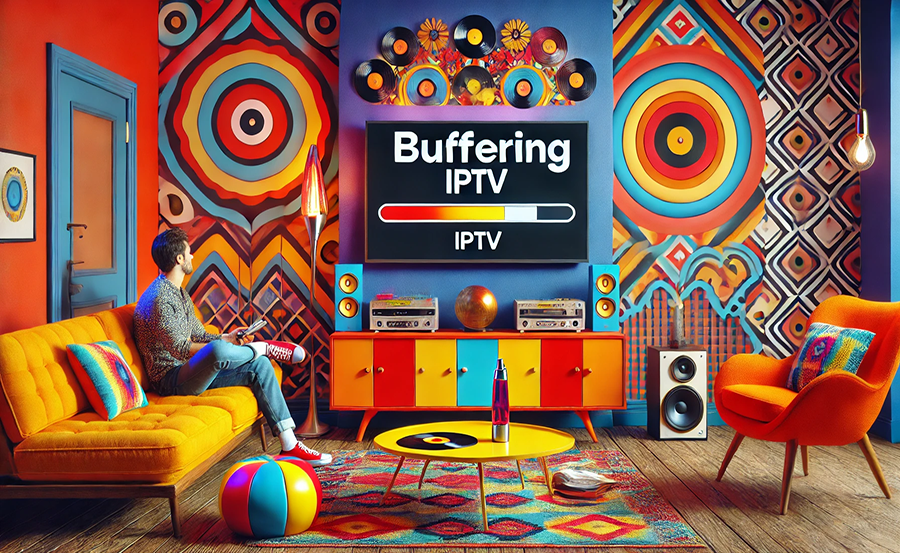With the ever-growing popularity of IPTV, ensuring a seamless streaming experience has become a priority for both service providers and users. The occurrence of buffering issues can significantly impact user satisfaction, driving the need for effective monitoring and optimization strategies. This comprehensive guide explores how network monitoring tools can assist in analyzing IPTV buffering, with insights from DuplexIPTV and other industry leaders, providing ultimate streaming insights to enhance user experience.
Understanding IPTV and Its Buffering Challenges
IPTV, or Internet Protocol Television, has revolutionized the way people consume media, offering TV programming through internet connections rather than traditional satellite or cable formats. The increasing demand for real-time content delivery has, however, led to challenges such as buffering, which can disrupt the viewing experience.
The Basics of IPTV Technology
At its core, IPTV relies on a system where the television content is delivered via internet protocol networks. Unlike downloaded media, IPTV streams the source media continuously, offering a smooth, television-like experience. Yet, achieving this smoothness requires a robust setup involving content delivery networks (CDNs) and efficient data transmission protocols.
Key Components of IPTV
- Content Sources
- Media Streaming Servers
- Content Delivery Network (CDN)
- End-user Devices
Understanding these components is vital for diagnosing and addressing buffering challenges. Each stage offers potential points of failure or latency that can degrade the viewing experience.
Why Buffering Happens
Buffering occurs when the IPTV stream gets interrupted, resulting in the infamous spinning wheel that viewers dread. This often results from a mismatch between the data being sent and the data being received. Factors like bandwidth limitations, network congestion, and hardware issues can exacerbate this problem.
For instance, during peak hours, network congestion might impede uninterrupted data flow, leading to delays. Similarly, insufficient bandwidth can constrain the data transfer rates, further intensifying buffering scenarios.
Role of Network Monitoring in IPTV Optimization
To mitigate buffering, network monitoring tools play a crucial role by providing insights into network performance and potential issues affecting stream delivery. These tools enable real-time analysis and prompt intervention, enhancing overall stream health and reducing user frustration.
Benefits of Network Monitoring Tools
Employing network monitoring tools offers several advantages, including early detection of anomalies, proactive network management, and empirical data for continuous improvement. By keeping a vigilant eye on data streams, these tools help maintain optimal streaming conditions.
Some key benefits include:
- Identifying bandwidth bottlenecks
- Detecting latency spikes
- Finding packet loss issues
Buy 1 Year IPTV Subscription and Enjoy Unlimited Content
How DuplexIPTV and Others Enhance Streaming with Monitoring
Industry pioneers like DuplexIPTV leverage cutting-edge network monitoring solutions to provide ultimate streaming insights. By utilizing sophisticated algorithms and analytics, they offer precise controls over bandwidth management, ensuring that users enjoy uninterrupted viewing experiences.
Innovative solutions, such as AI-driven tools, give granular visibility into network operations, allowing for dynamic resource allocation based on real-time needs and conditions. This not only improves buffer times but also optimizes the viewer’s overall experience.
Implementing Monitoring Solutions for Superior IPTV Performance
Effective implementation of network monitoring solutions requires a strategic approach focused on selecting appropriate tools and integrating them seamlessly into existing systems.
Choosing the Right Network Monitoring Tool
When selecting a network monitoring tool for IPTV buffering analysis, consider factors such as compatibility, scalability, and the ability to provide real-time data and alerts. Ideally, the tool should integrate well with existing technologies and offer intuitive user interfaces for easy management.
Comprehensive solutions that combine predictive analytics and machine learning capabilities are increasingly favored since they can preemptively pinpoint issues that may affect streaming performance.
Integrating Monitoring Tools with Existing Systems
Integration is vital to ensure that new monitoring tools complement existing infrastructure efficiently. Engage IT professionals to handle the technical integration processes, ensuring all aspects of the network are monitored seamlessly.
The integration phase should involve extensive testing to ascertain that the monitoring tools do not inadvertently affect bandwidth or streaming quality. Regular updates and system audits can further ensure sustained operational excellence.
Optimizing the Customer Viewing Experience
Beyond technical solutions, the end goal is to provide a superior customer experience. Implementing user-centric approaches is crucial to achieving this objective.
User Feedback and Data Analytics
Collecting user feedback is invaluable. Analyzing viewing patterns and understanding user interactions help identify trends and areas needing improvement. Feedback mechanisms, combined with data analytics, reveal insights into user preferences and expectations, guiding service improvement.
Personalizing Content Delivery
Tailoring content delivery based on user preferences can significantly enhance viewing experiences. Utilizing data-driven insights to curate personalized content recommendations ensures that users receive streams most aligned with their interests. Doing so increases engagement and reduces the perceived impact of any occasional buffering incidents.
Seeking Continuous Improvement in IPTV Delivery
As technology and user expectations evolve, IPTV services must adopt a philosophy of continuous improvement, leveraging data and network analytics to remain ahead of potential issues and deliver impeccable service quality.
Regular updates and Scalability
Regular system updates are pivotal to maintaining a robust IPTV service. Keeping software and hardware up to date ensures compatibility with the latest technologies and prepares the system to handle increased loads smoothly.
Moreover, scaling the infrastructure to support more users or higher data volumes should be a consideration from the outset, allowing for expansion without sacrificing performance.
Future Trends in IPTV Technology
The future of IPTV technology looks promising, with trends such as 5G connectivity, AI-powered streaming, and enhanced interactivity set to redefine user experiences. Adopting these innovations early can provide a competitive edge, transforming services from mere content delivery platforms into engaging, interactive user experiences.
An Open Ending to an Evolving Story
Drawing a finish line for our journey through IPTV buffering solutions is challenging because the story continues to evolve. As new technologies emerge and user expectations shift, continuous adaptation and innovation will be key. Dominion over buffering troubles today lays the groundwork for a feature-rich viewing experience tomorrow.
Frequently Asked Questions

What is IPTV Buffering?
IPTV buffering is the pause or delay during the streaming of video content over the internet. It occurs when there’s a delay in data transfer, causing interruptions in playback.
How can DuplexIPTV help reduce buffering?
DuplexIPTV offers advanced network monitoring tools that help identify and diagnose issues within the IPTV delivery system. By optimizing data flow and managing bandwidth, it helps minimize buffering incidents.
Are network monitoring tools necessary for IPTV providers?
Yes, network monitoring tools are crucial for IPTV providers to ensure optimal streaming performance. They help identify issues early, enabling prompt corrective actions and improving overall service quality.
What factors should be considered when choosing a network monitoring tool?
Key considerations include compatibility with existing systems, real-time analytics capabilities, user interface simplicity, and the tool’s ability to scale with your operations.
How does user feedback contribute to IPTV optimization?
User feedback provides direct insights into the viewer’s experience, highlighting areas of improvement and allowing for targeted enhancements in streaming quality and content delivery.
What future trends might impact IPTV streaming quality?
Emerging trends like 5G, AI-driven analytics, and interactive streaming experiences are poised to influence IPTV quality, enabling more seamless and engaging user experiences.
Perfect Player vs. Other IPTV Apps: Which is Best for Android?





